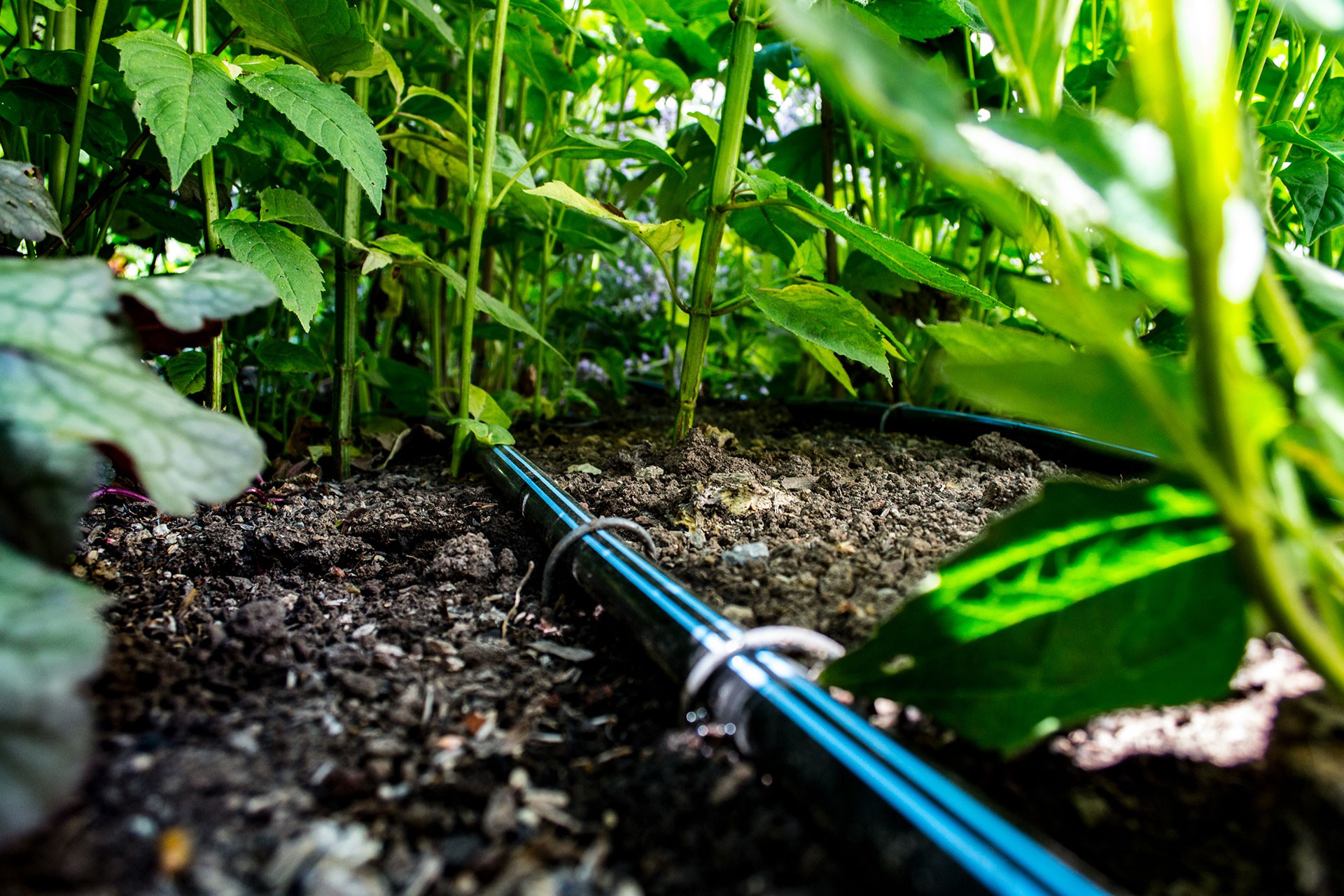Drip Irrigation

Drip Irrigation
Drip irrigation is a method developed for use in intensive irrigation agriculture. Drip irrigation is called drip irrigation. In order for the water to be given in drops, the pressure must be low. Drip irrigation is a system that delivers purified water to or into the soil surface with the help of small diameter drippers placed on the soil surface or just below the surface. This system allows water to be delivered to a designated pattern under low pressure. The pressure required to operate this system is less than that of sprinkler irrigation systems. In this system, water is delivered to the effective root depth of each plant through a widespread network of pipes. On the other hand, thanks to the drip irrigation system, fertilizers and chemicals that will be given to plants can also be given together with irrigation water (fertigation). In short, the basis of drip irrigation system is to keep the amount of water and nutrients needed by the plant at the optimum level. The basic principle in drip irrigation method is to give a small amount of irrigation water each time at frequent intervals only to the effective root area where the plant roots develop, without creating the tension caused by the lack of moisture in the plant. In this method, sometimes more than one irrigation can be done every day or even a day. In drip irrigation method, the purified water is transmitted to the drippers placed near the plant by a network of pressurized pipes and delivered from the drippers to the soil surface under low pressure. From here, water enters the soil by infiltration. By the effect of gravity and capillary forces, the volume of soil in which plant roots develop is wetted. In this method, the entire area is usually not wetted. A wet Strip is obtained along the plant row, leaving a dry area between the plant rows that is not wetted. Thus, it is aimed to make maximum use of existing irrigation water. The drip irrigation system is a form of. Elements of the system remain in the same position during the irrigation season. However, some elements can be removed from the land at the end of the irrigation season. Especially for frequent planting orchards, the most suitable irrigation system is drip irrigation, partly mini-spring irrigation system. In Keel irrigation, lakes form on the surface of the land, and drying can be seen, especially on rootstocks sensitive to root rot, such as MM 106. On the other hand, drip irrigation system is a very preferred method in recent years due to its advantages such as saving labor, increasing the efficiency of irrigation and fertilization, saving irrigation water.

